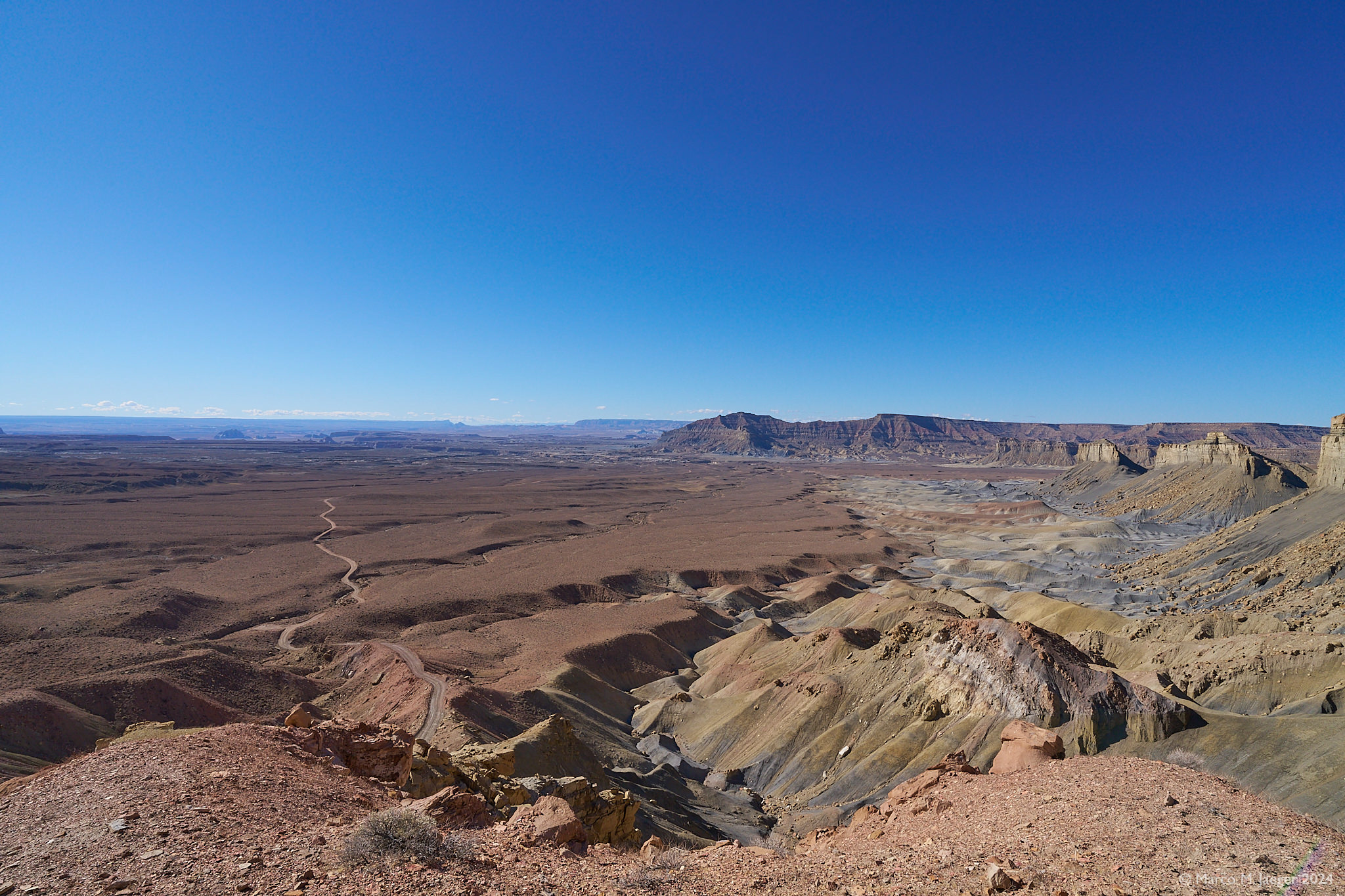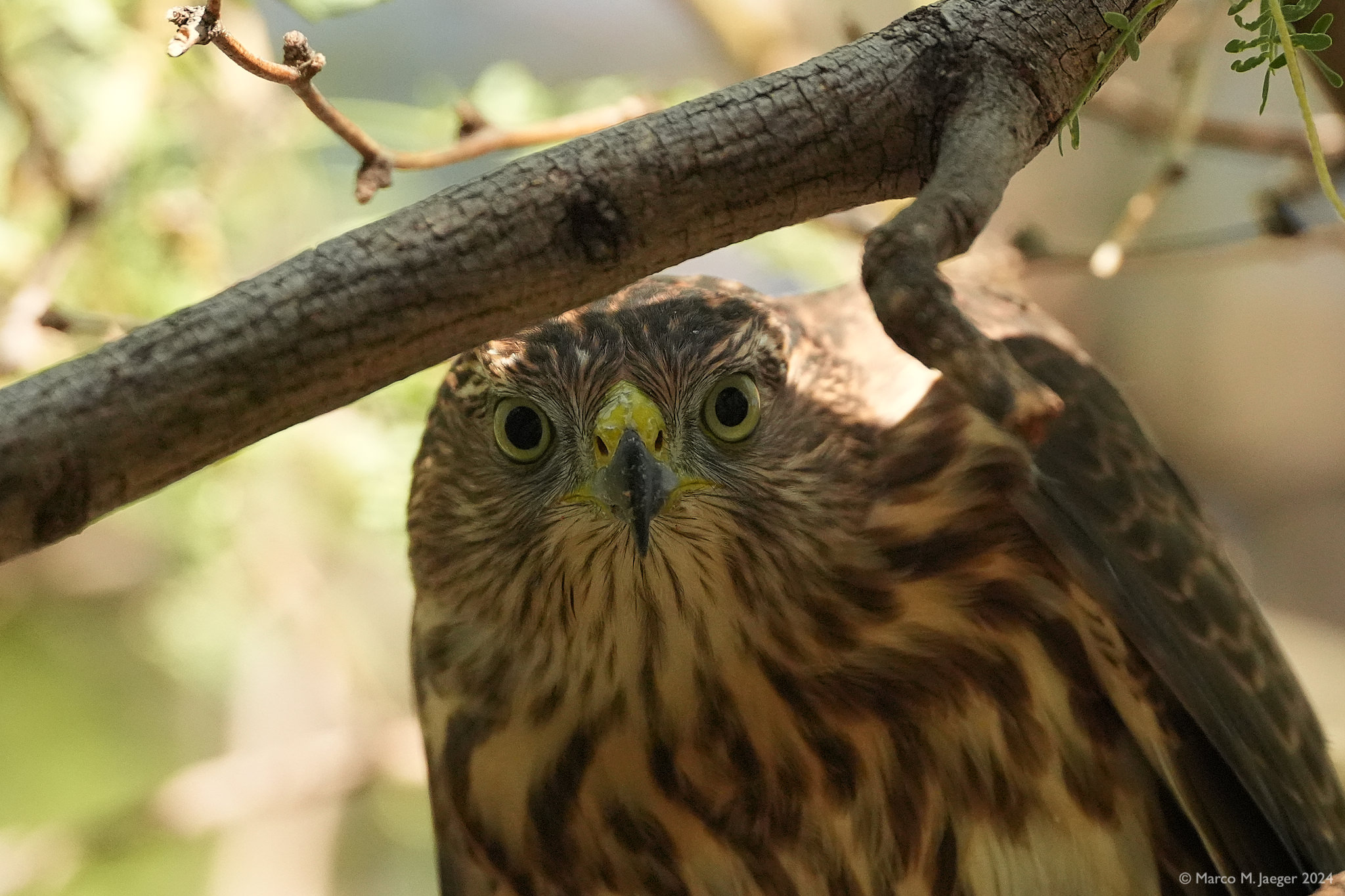We don’t want to run into bad weather again today, therefore we leave earlier. At around 10am we arrive at the Sunset Crater Vulcano National Monument and it is already a bit cloudy.
Sunset Crater Volcano National Monument is the slightly tautological name given to an area northeast of Flagstaff containing the results of much igneous activity – several colorful cinder cones formed by extinct volcanoes, and large expanses of lava and ash, mostly unobscured by vegetation and still pure black in color. The dominant peak is Sunset Crater; as with the other cones its slopes have distinctive dusky red-brown patches formed by oxidised iron and sulphur, which caused John Wesley Powell, who was the first modern-day explorer of the area in 1887, to name the mountain ‘Sunset Peak’. The contrasting colors of the cinders provide the most unusual aspect of the national monument but the jagged and twisted lava fields are also quite spectacular. Sunset and the neighboring craters are just one small part of the San Francisco volcanic field, an extensive region of nearly 2,000 square miles that contains some 600 identified volcanoes.
Source: www.americansouthwest.net
We first take a stroll to a huge lava field just a short distance from the park entrance. A lava stream must have flown into the forrest some thousand years ago – very impressive. The lava rocks still have very mean and sharp edges and points. Most, surprising though is that there are still some trees growing “out of these rocks”.
A bit later we park the car in the designated park area and walk the Lava Flow Trail, it is amazing to see how slowly vegetation returns, Sunset Crater erupted about 1000 years ago and there are still only a few trees and other plants growing after such a long time! The sun is coming and going and offers a nice play of light and shade.
Then we continue North East away from the clouds towards Wuptaki National Monument. The view from the road is breathtaking, from one place we see all the way to Monument Valley which is more than 100 Miles away! On one side desert, on the other side green mountains. From over 8,000 feet (2,430 Meter) with lush greens and trees we descend to about 4,000 (1,220 Meter) into the desert. After entering Wupatki National Monument we turn right towards the Wukoki Ruins but then take a gravel road that leads to the Little Colorado River. And, indeed, the river is a river and carries a nice stream of water. We don’t dare driving through and park the car to take a walk. Not far up the stream we hear something like a waterfall and soon we see a dam. It’s only about 3 feet (1 Meter) high but here we can see how much water the river really has. On the other side of the river are some cows with their calves – they are curiously watching us.
On our way back we see how thick black rain clouds have now gathered around the mountains, we can see lightnings and we can hear the thunders – a fantasistic natural spectacle. And, guess what, it is right in the direction we are heading, it’s over Flagstaff!
Back on SR 89 South just at the outskirts of Flagstaff we get the full program: we drive right into the thunderstorm: lightnings and thunder at the same time and heavy rain, even mixed with some small hail. For a few miles we can hardly see anything and the roads are more like rivers. We make it to HWY 40 East and escape the rain. Mid afternoon we are safely back at the Hotel and the sun is shining again.













